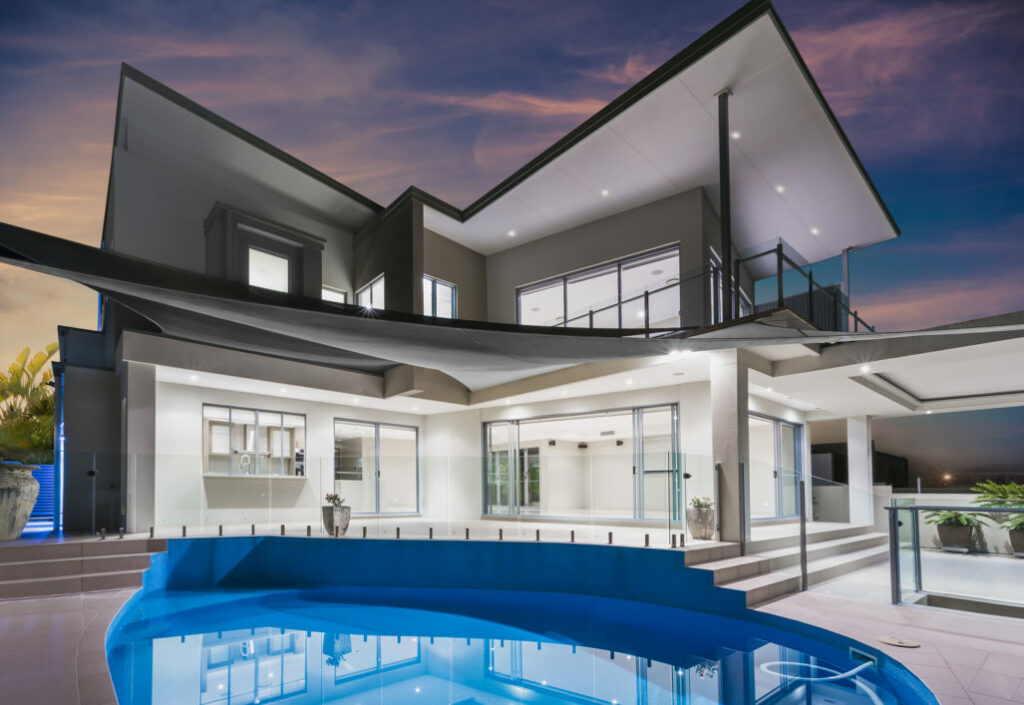So you’ve heard the words “Modern” and “Contemporary” used in terms of architecture and design. When it comes to designing and building your home, which style do you prefer? Did you know that there is a difference between the two?
When you define the words, they both seem to mean almost the same:
- “Modern: Of or relating to present times as opposed to the remote past.”
- “Contemporary: Belonging to or occurring in the present, at the same time.”
But when we talk of architecture or interior design, believe it or not, there is a difference.
Modern Architecture
Modern architecture or Modernist architecture came into play at the turn of the 20th Century with efforts to break away from underlying traditional architectural designs. This was mostly due to the rapid technological advancements which were occurring, and the modernization of society after the industrial revolution. Modern architecture, especially after the 2nd World War, had a stylistic thread with a modernistic theme which gained global popularity and was adopted by many architects and architectural educators as a dominant architectural style. This generated various reactions, since it was pulling away from traditional styles, and this was the start of the open plan look, where kitchens opened to dining and living areas.
These modern designs also focused on minimalism, neutral colors, and clean lines often incorporating glass windows where walls would traditionally have existed. Whitewash or white stucco was used on exterior walls, with a uniform intentional asymmetry in the design of the home. Here you will see flat roofs and distinct right angles which became inherent in modern architecture as well. You will see this in “modern” buildings as you drive along a street and come across a home where whitewash surfaces predominate, corner windows are evident, and cantilevers and overhangs can be found. An intentional asymmetry of the modern style is a departure from the Classical bilateral symmetry that was prevalent before the 20th century.
Although a case can be made that modern design refers to anything from the 20th Century, it actually was in play between 1920 and 1950 and prominent in those times.
So if you see a room, or a home exterior, with consistently clean lines throughout, white walls, and neutral colors, an architect or designer would refer to that design as a modern design. There was also an absence of ornament with a use of natural elements here and there as well, incorporated into the design.
Contemporary Architecture
Contemporary gives a room or design not only the feel that it belongs to times today, but that it is innovative and forward looking. This style will reflect what is going on in society at this time in that certain design themes may be popular today, with architecture of the moment. Contemporary design is rooted in modern, although it does not resemble it stylistically. You will not see the same uniformity, but here you will find a mixture of clean lines with more complex designs and will be more free form with shifts of style incorporating what is popular.
A kitchen, for instance, may have some clean, long lines with other softer features in areas such as a desk area, a contrast in the pendant lighting style, or seating nook with a curved bench incorporating wood or a popular look of today.
Contemporary architecture and style is, literally, what is being created and produced right now. It is dynamic, meaning it’s constantly changing. It can be quite eclectic for this reason – contemporary style isn’t tied down to one specific style – it’s of the moment and borrows bits and pieces from a variety of styles and eras.
Clean-lined furniture is perhaps one of the most apparent places where today’s contemporary style merges with the popular modern style. Basic forms, clean lines, beautiful yet simple shapes, and a focus on comfort all blend together in today’s contemporary furniture styles.
Contemporary design also embraces a balanced use of natural materials, such as cedar and stone. These natural finishes are often mixed with steel, concrete, and other industrial-inspired materials to provide an aesthetic balance of yin and yang.
Why the Confusion?
One reason these two terms are used interchangeably, and, perhaps, confusingly, is because many of the characteristics and elements of modern design (a.k.a. mid-century modern or retro) are popular right now. Thus, modern design is in integral part of today’s contemporary design. We’ll see in twenty years what the new contemporary style is!
Creative Commons Attribution: Permission is granted to repost this article in its entirety with credit to Nelson Construction and a clickable link back to this page.


